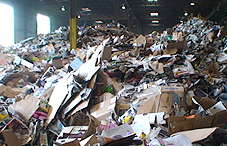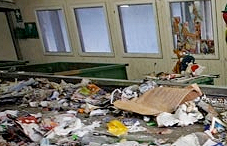Style Sampler
Layout Style
Search News Posts
General Enquiries admin@kampyro.co.uk
•
Nations of the world established regulatory bodies to monitor and control environmental pollution created by man. The implementation process led to creation of recycling plants and garbage management systems. Technological advances now give us opportunities to reuse materials and accomplish day-to-day activities.
How Recycling Is Done
All kinds of materials including metal, textiles, glass, electronics, plastic, and paper can be recycled. Composting is a natural recycling process among other biodegradable waste methods involving deteriorating garden plants and food materials. The process involves collecting such material from pickup spots along curbs, sorting, cleaning, and then reprocessing the same into fresh material that could be used for manufacturing purposes. The process of recycling enables waste materials to be converted into different products while reusing materials otherwise considered waste. The process helps reduce usage of raw materials and energy consumption. It prevents water and air pollution by substituting disposal methods used conventionally. Recycling has turned into a vital third component to reduce waste using modern methods. Technological advances create modern and better ways to recycle waste material. Generating power from waste products for an entire town is actually possible.
Paper is broken down during the recycling process with the help of chemicals and water. The pulp is then manipulated with heat turning it into cellulose, which forms organic raw material for the manufacturing process. Pulp is freed from unwanted residue including plastic and glue by straining it across a screen. It is then de-inked and bleached before being immersed into a water solution. The raw material is now ready to be converted into recycled paper.
According to the United States Environmental Protection Agency (EPA), the process of recycling has effectively reduced air pollution by nearly 74% and water pollution by nearly 35%, as compared to manufacture of virgin paper. Traditional mills working on pulp were original sources of water and air pollution, especially those using the bleaching process to cure pulp. They have given way to modernized mills using recycling processes known to reduce pollution when compared to 10-year-old mills. The burden of using virgin pulp is reduced making way for pollution-free manufacturing processes. Chemicals like sodium hydro sulphite and hydrogen peroxide are commonly used to bleach recycled paper, though bleaching agents earlier used for virgin paper processes are still valid. Modern mills use what is known as process chlorine free (PCF) processes to recycle paper, though they may have to deal with other pollutants like sludge (byproduct). For example, nearly 22% in weight of the total recycled paper is sludge at the Cross Pointe’s Miami Mill in Ohio.
Albert Fryer was the first designer to have patented incinerators in UK used for the purpose of disposing waste in the year 1874. The process included creating a combustion process wherein organic material found in waste is converted into flue gas, heat, and ash with the help of high temperature. The system turns the flue gas into a catalyst carrying ash generated when inorganic components of waste undergo combustion. Particulates and solid materials found in flue gases are removed before entering the atmosphere. Some processes are able to generate electricity through heat during incineration.
Pyrolysis, anaerobic digestion, and gasification along with recovery of energy during incineration form part of waste-to-energy (WTE) technologies. Gasification results in combustible gas, whereas incineration generates energy in the form of intense heat. This is the basic technological difference in both methods, which otherwise follow the same principle. In some cases, recovery of material and energy generation is not part of the gasification or incineration processes.
When glass is recycled, the process converts unusable or waste glass into mouldable items. The waste is generally separated by chemical process. Depending on methods used locally to create the required end product, processing capability differs. Glass has the property to retain colour, which is why recyclers segregate glass as per its colour. Consumer glass containers are mainly manufactured in green, amber/brown, and colourless materials.
Density and weight of glass makes it into one of the larger components of industrial and household waste. Garbage collected by municipalities contains mainly light bulbs, broken glassware and bottles, and other waste products. Manual processes have a 40% defect rate when creating objects made of glass. Recycling requires less energy as compared to processes using soda, lime, and sand to manufacture glass.
Nearly 315 kg of carbon dioxide is prevented from being released into the atmosphere whenever 1000 kg of waste glass is recycled to create fresh products. Raw material made of crushed glass is re-melted. The traditional way of manufacturing glass containers requires segregation of raw material by colour. However, new processes use equipment capable of optically sorting out glass based on colour, thereby removing the need to manually sort glass. Precautions must be taken to avoid mixing borosilicate glass and/or Pyrex, both high-resistant glass materials, with raw material needed to manufacture glass containers. Such materials can have adverse effect on fluid viscosity during the re-melting stage in a furnace.
GGlass can be recycled any number of times thereby reducing load on energy consumption. It helps preserve raw materials and reduces the amount of disposed waste in landfills.
Food is stored in containers made of tin and steel. Thin metal sheets are turned into cans to hold beverages, chemicals, foods, oil, and other products. Steel cans have specific purposes and are sometimes coated with tin. Aluminium cans are also known as tin cans in some places.
Steel is known to be the most recycled material obtained from packaging cans, accounting for nearly 65% of steel cans used. Nearly 52% of aluminium cans is recycled, as compared to 63% of steel cans in the United States. The rate of recycling in Europe, however, floated around 74% in the year 2011. Tin is mostly recycled in smelters, though other processes may also be involved. For example, a survival or camp stove is often made of two tin cans holding alcohol as fuel to cook meals.
Waste or scrap plastic materials are recovered through the recycling process and converted into useful items. The end product may be completely different from the original, but global efforts are initiated to ensure plastic, which is not biodegradable, is recycled.
Soft drink bottles are often recycled into plastic tables and chairs. Nevertheless, beverage bottles made of plastic can never be completely recycled and used for storage purposes, as virgin plastic materials are needed for packaging beverages. In essence, the process is downsizing rather than recycling of plastic. Manufacturing processes producing polyethylene bags and films also use recycle plastic. The main production process included recycled plastic pellets since the 1970s, thereby converting the system into an efficient closed-loop operation.
Timber is environmentally friendly, and people prefer using recycled timber. The biodegradable product reduces the need to cut more trees preserving greenery and helping the environment. Greenpeace has listed recycled timber as the preferred form of timber and cited it as an environmentally-friendly product on their site. Recycled timber is also used in the construction business promoting timber mills and creating awareness among people about deforestation and preservation of the environment. Around 18,000 Btus of heat energy is preserved by recycling 1 ton of wood.




